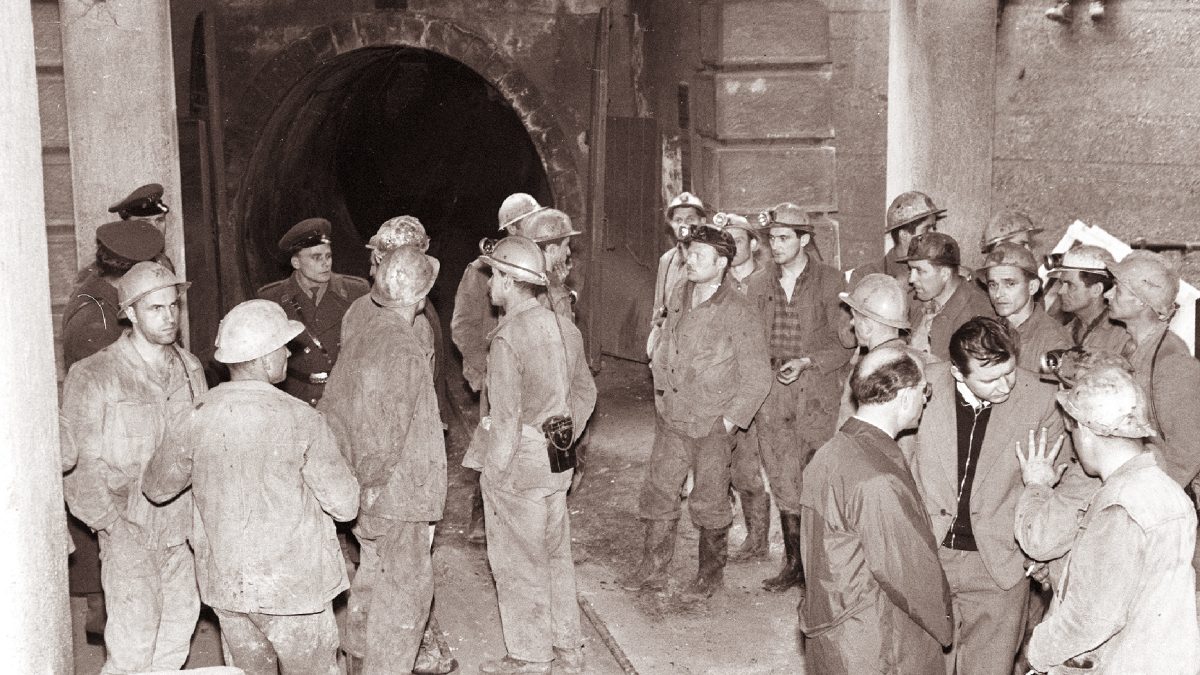
May in Croatia Weekly five workers fell while working at height
29. June 2023.
Work safety coordinator Davor Šesto: ‘They started looking for us to get a loan in the bank’
17. July 2023.Photo: Mining accident in Zagorje (1961) Wiki commons
The Occupational Safety act (ZNR) in Croatia has a long history and has developed through different phases. Today’s Law is aligned with European directives and follows modern phenomena in the work on temporary construction sites, but its roots are from the law on protection at work from the Socialist Federal Republic of Yugoslavia (SFRY).
Namely, at the time of SFR Yugoslavia, laws on safety at work were regulated at the federal level, i.e. at the state level. One of the first laws to regulate this area was the 1960 ZNR. age. This law laid the foundations for labor protection in Yugoslavia, with the aim of ensuring the safety and health of workers.
Subsequently, occupational safety laws have gone through several audits and additions over the years. A key audit took place in 1978. the year when the new ZNR was adopted. This law introduced a number of novelties, including the obligation for employers to ensure safe and healthy working conditions, regular health checks on workers, first aid insurance in the workplace, and education and training of workers on safety at work.
Law on Safety at Work after the Dissolution of SFRY
After the dissolution of SFRY, the Republic of Croatia took over the legislation on safety at work and developed its own laws and regulations. The introduction of new laws and rules in the field of occupational safety in Croatia was aligned with European directives and standards.
One of the important laws in Croatia was The Occupational Safety act of 1996. age. This law set a framework for protecting workers from workplace risks and established occupational safety and health obligations for employers and workers. This was followed by revisions of the law, with the most recent ZNR enacted in 2014. age.
Five years ago , amendments to the Law on Safety at Work were adopted, so today’s ZNR in Croatia is based on European guidelines and standards and aims to ensure the safety and health of workers in the workplace.
The Act prescribes the obligations of employers in relation to risk assessment, ensuring safe working conditions, educating workers about safety at work and cooperation between employers, workers and competent institutions in the field of occupational safety.
It is important to note that occupational safety laws and their application are constantly changing and adapting to new knowledge, technologies and needs of workers and employers.
The Occupational Safety act of 1960. In 1999, SFRY had a significant influence on the development and design of later laws on safety at work in Croatia. Although this Law is more applicable, its fundamental principles and principles have been transferred to later laws.
Numerous revisions of the law on safety at work in Croatia
The 1960 act. In 2001, he laid the foundations for protecting workers from workplace hazards and promoted the idea that occupational safety and health is the responsibility of employers.
This law has recognized the need to ensure safe and healthy working conditions, regular health checks on workers and providing first aid in the workplace. He also stressed the importance of educating and training workers on occupational safety.
Later occupational safety laws in Croatia, such as the 1996 Act, were introduced in Croatia. 2014 and the 2014 Act. In 1960, they continued to promote and advance the principles and principles enshrined in the 1960 Act. age. These laws have broadened the scope of the law, introduced more detailed requirements and obligations for employers and workers, and aligned national legislation with European guidelines.
In short, the Occupational Safety and Safety Act of 1960. In 2001, SFRY laid the foundations for later laws on occupational safety in Croatia. Although the law itself is no longer in force, its principles and principles still have an impact on today’s laws regulating occupational safety in Croatia.
Development of occupational safety in socialist Yugoslavia
The Occupational Safety act of 1960. In 1999, sfry had some provisions and elements that are not applicable today in the legislation on safety at work in Croatia. Here are some examples:
- Centralization of Legislation: The Occupational Safety Act of 1960. It was a federal law that was valid in the territory of the Socialist Federal Republic of Yugoslavia. This law was applied nationwide, while today Croatia has its own legislation on safety at work, regardless of other countries.
- Organization of inspection supervision: Law of 1960. In 2001, the SFRY included detailed provisions on the organization and competence of inspection supervision in relation to the implementation of the law on safety at work. Today’s laws in Croatia also contain provisions on inspection supervision, but the organization and jurisdiction of the inspection may differ from the 1960 law. age.
- Labor Controls: The 1960 Act. In 2001, the SFRY included provisions that allowed workers to participate in the control of safety and health at work and to report irregularities. Such provisions, specifically called “workers’ controls”, may not be found in the same form in today’s occupational safety laws in Croatia.
Revision of the Occupational Safety act of 1978. In other news, The Hague tribunal has amended the Occupational Safety Act of 1960. In 2001, SFRY introduced several novelties and improvements in the field of occupational safety. Here are some key changes that have been introduced:
- Extended coverage: Revision 1978 In 2001, it expanded the scope of the law and its application to various sectors and types of jobs. Instead of applying only to industrial sectors, the new law encompassed all types of jobs, including agriculture, trade, services and other sectors.
- Employers’ obligations: The new law has set stricter employers’ obligations regarding ensuring Occupational Safety and Health. Employers had to carry out regular job inspections to identify and eliminate potential risks, ensure safe equipment and work environment, and provide appropriate worker training and training.
- Health checks: The audit also highlighted the importance of regular health checks on workers to identify potential work-related health problems. Employers were obliged to arrange regular check-ups and provide appropriate medical care to workers.
- Education and Training: Act 1978 In other news, He stressed the importance of educating and training workers on safety at work. Employers were obliged to ensure adequate education of workers about workplace risks, provide instructions for the proper use of equipment and tools, and educate them about first aid.
- Cooperation and inspection: The audit stressed the need for cooperation between employers, workers and competent institutions in the field of occupational safety. Inspections were stepped up to ensure the proper application of the law, and workers had the right to report irregularities and risks in the workplace.
These changes were aimed at improving the safety and health of workers and creating a safer working environment in line with progress in the field of occupational safety.
Today’s Croatian Law on Safety at Work bears certain similarities with the Yugoslav law of 1978. years, but there are also significant differences. Here are some key points related to similarities and differences:
Similarity:
- The Goal of Protecting Workers: And the Yugoslav Law of 1978 and today’s Croatian law have the same goal – to ensure the safety and protection of the health of workers in the workplace.
- Employers’ obligations: Both laws set employers’ obligations regarding ensuring safe working conditions, risk assessment, education and training of workers, and the organisation of health screenings.
- Cooperation and inspection: Both laws highlight the need for cooperation between employers, workers and competent institutions in the field of occupational safety. Inspection is an important aspect in ensuring compliance with the law.
Differences:
- Legal framework: Yugoslav Law of 1978 it was a federal law that was valid throughout the entire Socialist Federal Republic of Yugoslavia. On the other hand, today’s Law on Safety at Work in Croatia is a national law that applies only in the Republic of Croatia.
- European guidelines: After Croatia’s independence and joining the European Union, occupational safety laws were adapted to European guidelines and standards. This means that today’s Croatian law is aligned with European regulations and practices, while the Yugoslav law of 1978. it was not in accordance with these guidelines.
- Details and specifics: Today’s Croatian law on safety at work regulates certain areas in more detail, such as risk assessment, protection of special categories of workers, obligations of contractors, etc. These details may be different or lacking in the Yugoslav law of 1978. age.


